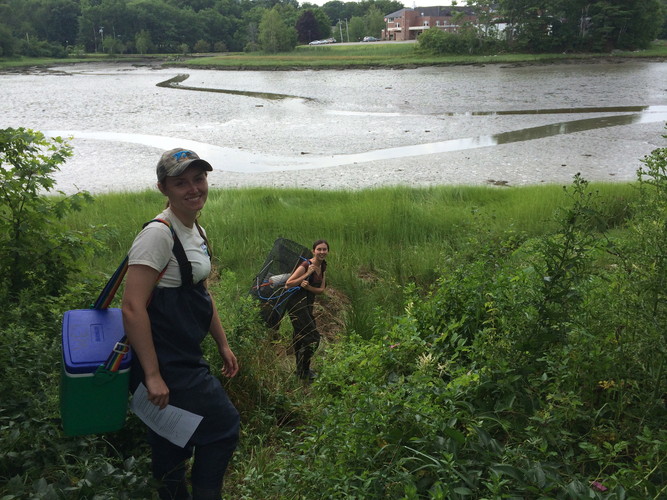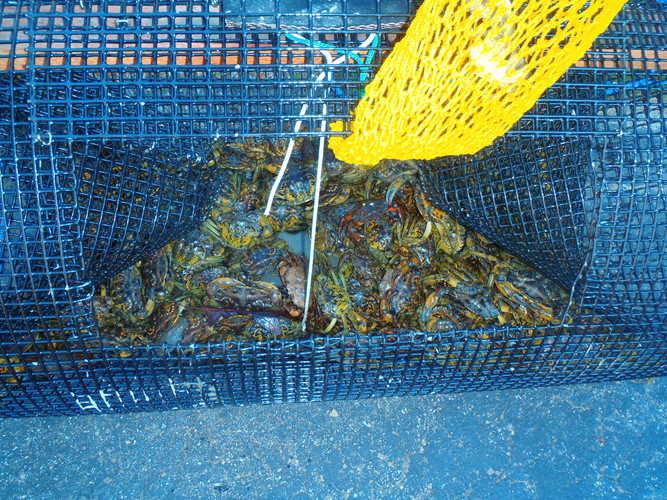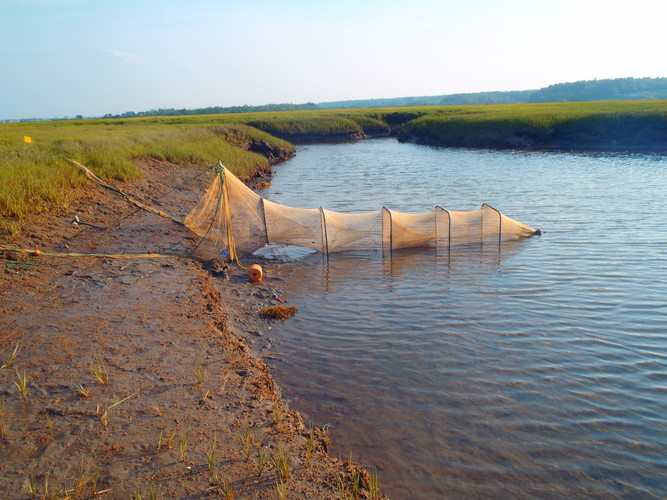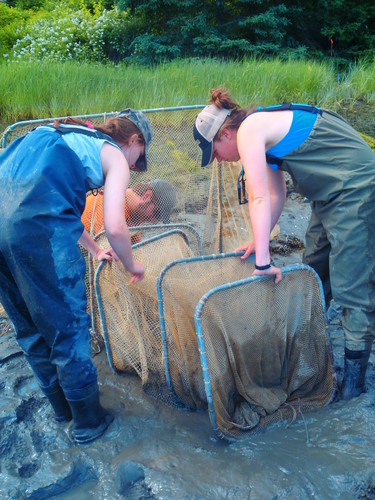The Wrack
The Wrack is the Wells Reserve blog, our collective logbook on the web.
The Wrack is the Wells Reserve blog, our collective logbook on the web.
 The invasive European green crab is not only a popular topic in the media these days; here at the reserve green crabs are receiving their fair share of attention as well — 5,878 of them so far to be exact!
The invasive European green crab is not only a popular topic in the media these days; here at the reserve green crabs are receiving their fair share of attention as well — 5,878 of them so far to be exact!
The Wells Reserve has teamed up with the University of Maine, Casco Bay Estuary Partnership, and Southern Maine Health Care to study the impacts of the invasive European green crab (Carcinus maenas) on the geology and “stability” of our marshes. Over the summer we have been collecting abundance data that will later be used in conjunction with fyke net data, water quality data, and even geological techniques to better understand the effects green crabs are having on salt marshes throughout southern Maine.

So, how exactly do you get an idea of the number of green crabs in different marshes? Lots of bait, traps, interns, and mud! We have done four, 24-hour trapping cycles, two in July and two in August, in three locations along the coast of Maine: Webhannet River in Wells (York County), Broad Cove in Yarmouth (Cumberland County), and Day Cove in Damariscotta (Lincoln County). At each location, two baited crab traps, as well as a water quality monitoring device, were deployed in the channel during low tide. The crab traps were left for 24 hours until retrieved. The water quality device is left in place for as long as 30 days and samples water temperature, dissolved oxygen, turbidity, and salinity every 15 minutes.

 After allowing the traps to “soak” for 24 hours, we collected the traps and processed the catch. This included measuring, weighing, and sexing all the crabs in each trap. After MANY hours of this, to date we have caught and counted 5,878 crabs: 3,247 from Webhannet River, 129 from Broad Cove, and 2,502 from Day Cove. These results are interesting to us because when setting up the study sites, these locations were partially chosen because of the perceived impact of green crabs, which was thought to be low in York County, moderate in Lincoln County, and high in Cumberland County.
After allowing the traps to “soak” for 24 hours, we collected the traps and processed the catch. This included measuring, weighing, and sexing all the crabs in each trap. After MANY hours of this, to date we have caught and counted 5,878 crabs: 3,247 from Webhannet River, 129 from Broad Cove, and 2,502 from Day Cove. These results are interesting to us because when setting up the study sites, these locations were partially chosen because of the perceived impact of green crabs, which was thought to be low in York County, moderate in Lincoln County, and high in Cumberland County.
In addition to the crab traps, we have also been sampling these sites using fyke nets to sample the vegetated areas of the marsh. Although these types of fishing nets capture green crabs, the main objective of using these along with our crab traps was to see what other creatures are using the marsh in the same area as the green crabs.

A fyke net is a series of enclosed funnels or “fykes” which allows fish to easily enter and be forced to the back of the net, but it is very difficult for them to swim back out. There are also two wing-like extensions that are extended up onto the marsh to guide fish into the fyke.

The net is set at low tide. When the tide comes in, fish move into the marsh vegetation and the net's wings are released. As the tide goes out, fish are funneled by the wings into the “cod end” of the fyke net. This method of fishing is both cost effective and time efficient, and gives us an accurate assessment of the density of fish per unit area of marsh. Additionally, the Reserve has many years of historical fyke net data from all over Maine. We will now be able to use those data for cross-site comparisons over time.
We are excited to continue analyzing the data and to share our findings with other green crab researchers and the public. So, stay tuned for more results and information on this research project!
Thanks to The Maine Outdoor Heritage Fund, Maine Sea Grant, and Casco Bay Estuary Partnership for the financial support to make this project possible.
10/7/14 update: Crab trap time lapse video can be found here.